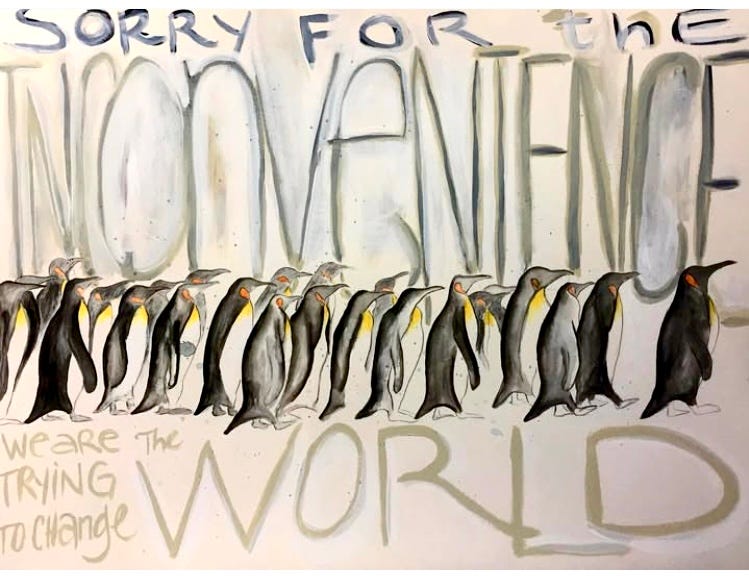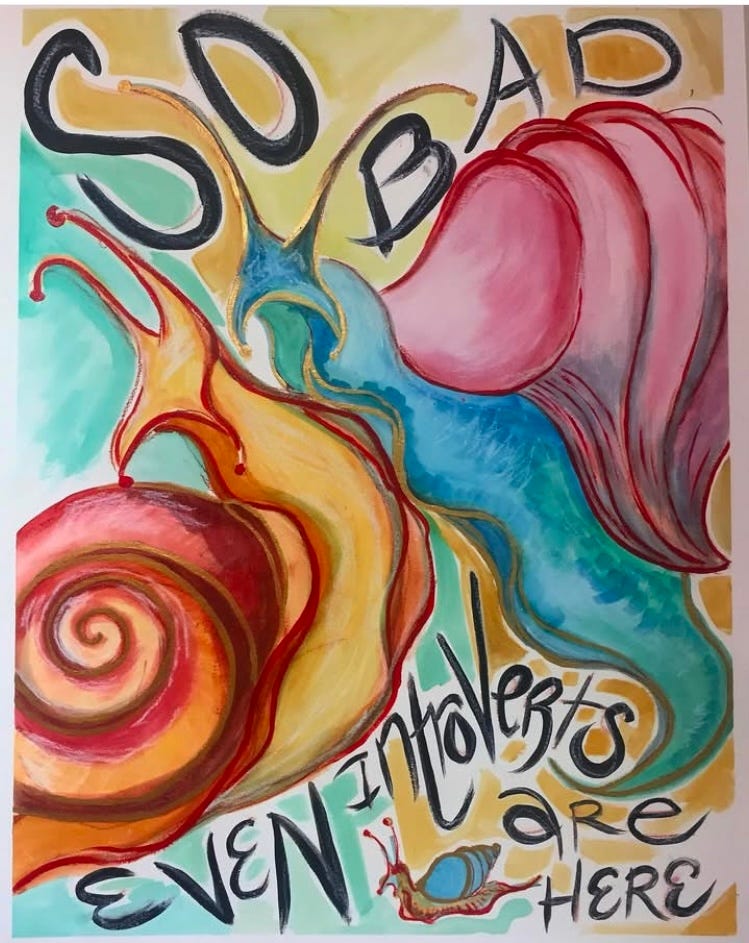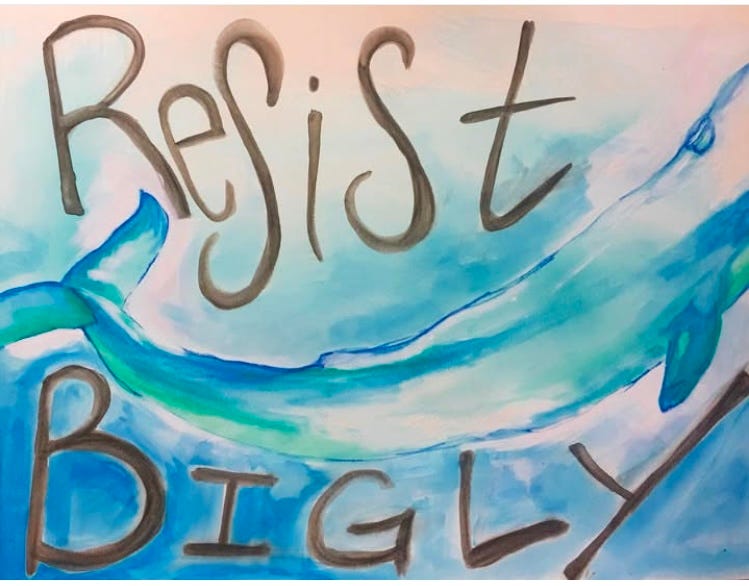In an era of cameras and rapid news cycles, making something by hand is powerful. It takes time and people want to know why you’re taking all that time: it must be important.

Art can transcend language and mobilize people to action. It often does this by touching viewers on an emotional level. A single image can tell a story that connects people to data or empathizes with others. It can be shocking or welcoming. It can be created by an individual or the result of a huge collaboration. Even act itself, the making of the art, can change people by creating a safe space to think, discuss, and share.
Art is so powerful, it’s one of the first things authoritarian governments try to censor.
Art has played a critical role in social movements throughout history. Civil rights, anti-war protests, and environmental causes have all used art to raise awareness, inspire action, expose injustices, and even to send secret messages among those in the resistance. Art has shaped public opinion and framed political discourse. It’s challenging to find art that doesn’t impact the public in some way: from photo of the naked child crying after a napalm attack in Vietnam in 1972, the lyrics of Bob Marley, the Blue Bra graffiti during the Arab Spring, Hannah Hoch pioneering collage and women in the arts while critiquing politics, the Guerilla Girls, Banksy, and more—art is not just a reflection of society, it is an expression of society, and it shapes the future of society.
Artists also shape society through knowledge production. The art-making process creates knowledge by exploring the world through the lens of art and making, contributing to human understandings of culture, ecology, language, perception, and more. Art opens the door to creativity when collaborating with other fields, such as the sciences, that are presumed to be more rigid.
Personally, this is why art and law go so well together—why I have a BFA in Painting and two law degrees. Law is the codification of society’s morals and values, and therefore it lags behind society, often the last thing to change. Art is at the cutting edge of society. It is the progress people are fighting for in the streets, in their knitting circles, in their garages—it is society’s values in practice. It is the voice of the people; the secret messages, the battle cries, the audacity to imagine a better future. In a way, art is how we can all practice law.
Activist art often makes use of traditional art forms like painting or music. Maybe these types of art practice are intimidating to you—where do you even start if you’ve never drawn before? Or don’t play an instrument? Let’s remember that what qualifies as “art” is highly debated, especially when people want to draw a line between craft and art (that gets messy and elitist real fast!). Never mind roping in performance art. I consider my voyage performance art: it’s my daily life, this voyage will last months, I’m making videos on YouTube, and I have a message to spread. Some will say it’s not ‘art’ but rather than dive into that debate right now, let’s just say art is creativity. Most people are more creative than they know. My time at the Hatfield Marine Science Center taught me that scientists are super creative and open-minded; it’s sort of their job to solve puzzles. How you design a community garden can be your creativity, or maybe you’re great at organizing events. As I wrote in Weaponise Your Privilege,
there’s a place for everyone in the revolution—and there’s room for everyone in art activism.
Maybe you’ve heard the mash-up words of Artivism or Craftivism (craft + activism). Whether you're painting or knitting together, both individual and group activities offer multiple ways to address an issue from a place of kindness. First, it creates a safe space to contemplate and discuss; new people can present new perspectives and old friends can offer moral support when facing hard topics.
Second, art/craft activism can be loud or quiet (a really great thing for people who don’t like the spotlight, are homebound, or are introverted). Your project can be front and centre in a march to city hall or something more private but impactful. For example, in Britain, a group of craftivists embroidered letters on handkerchiefs, personalised to each of the 14 board members of a particular company. The letters requested that the board reconsider salaries for their employees. This personal, quiet reminder of how their decisions impact real people, made them change their minds and adjust pay for all employees appropriately. (You can learn more about this and the Craftivist Collective on this TedTalk.)
Third, art/craft activism is often a slow activism. For people interested in living a slow life and getting burned out on the urgency of many forms of activism, art can be restorative. It can be meditative to paint or cross-stitch; it gives the mind a chance to catch up and process what’s happening in the world. That time to think helps us empathise and understand issues that may not impact us personally or see things from another perspective. Taking time to sit in calm reflection and create something can change how we see an issue or the world.
Fourth, making art from a place of kindness and compassion, acknowledging the humanity of everyone involved, creates a kinder world. If we want a better world, we need to be the ‘better’ we want to see. And it works—a little piece of welcoming art can naturally spark a conversation and share a picture on social media.
There are more wonderful reasons to engage in activist art and craft. One of my favourite quotes,
If I can’t dance, I don’t want to be part of your revolution.
How do you dance in the revolution? How do you find joy in your work/efforts to make the world a better place?
Would you be interested in participating in art workshops, like Drawing 101 or Art + Craft Activism? Let me know!





